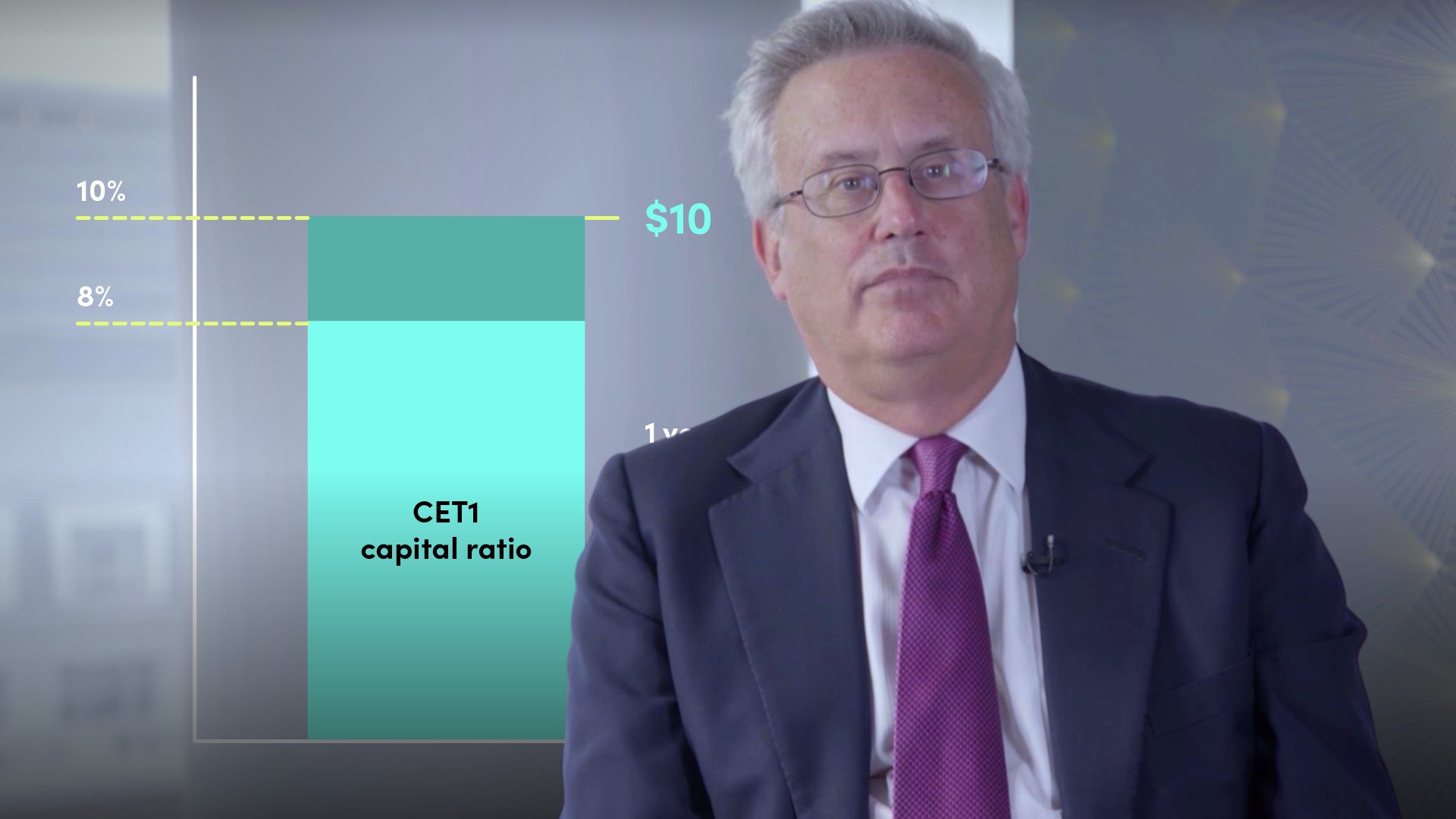
Introduction to Banking Regulation

Peter Eisenhardt
30 years: Capital markets & investment banking
Regulation is always changing. In this video, Peter explains the evolution of bank regulation and how it will change in the future.
Regulation is always changing. In this video, Peter explains the evolution of bank regulation and how it will change in the future.

Introduction to Banking Regulation
23 mins 28 secs
Financial markets regulation is designed to protect investors and promote stable, orderly, efficient and transparent financial markets. Bank regulation is designed to ensure that banks have sufficient capital and liquidity, and the frameworks in place to measure risk, so that losses can be contained.
Key learning objectives:
Cross-border co-operation – the BCBS and the FSB
Understand how bank regulation is organised
Comprehend how regulation might dilute shareholders’ returns
How is bank regulation organised and how might regulation dilute shareholders’ returns?
Bank regulation is typically under the control of the national central bank. It covers three broad areas:- Prudential regulation sets out and quantifies standards principally around the levels of bank liquidity and capital banks have to hold to protect depositors, counterparties and society from the risk of banks failing
- Supervisory mechanisms ensure that banks have the right frameworks in place to measure, control and mitigate risks within regulatory limits, and that adequate capital and liquidity resources are maintained at all times
- Systemic risk controls recognise the interconnectedness of the financial system. Regulators seek to ensure that when things do go wrong bank losses can be contained, so that the collapse of one bank won’t lead to the failure of the entire system. More recently these regulations have focused on how to ‘resolve’ or wind down banks in an orderly way when things do go wrong
- Regulators require banks to have enough sufficient capital to absorb losses arising from credit, market, and operational risks. Excess capital (shareholders’ equity) is a drag on profitability because it dilutes shareholders’ returns. The more capital a bank has to hold, any profits must be shared across more capital providers, hence individual returns fall
- Regulators require banks to hold sufficient liquidity to cover a run on deposits or the loss of other funding sources. This liquidity, in the form of a stock of very low-risk assets, represents an opportunity cost for the bank and its shareholders. They would rather invest in the bank’s bread-and-butter customer business, which offers much higher returns
- Banks are required to invest in the costly infrastructure required to measure and manage risk
Cross-border co-operation – the BCBS and the FSB
At the forefront of global banking standards and regulatory co-operation are the Basel Committee on Banking Supervision (BCBS) and the Financial Stability Board. The Basel Committee on Banking Supervision has produced standards since 1988.- The first iteration – the Basel Accord – required banks to assign risk weightings to assets to measure the credit risk inherent in them. Banks applied these risk weightings to assets and were required to hold capital equal to at least 8% of risk-weighted assets
- Basel II (2004) dealt more thoroughly with market and operational risk. It allowed banks to use internal models to assess credit risk and derive their own risk weights. This led to banks using lower risk weightings than those set out in the Accord, and therefore to hold less capital against the credit risk in their asset books
- Basel III followed the global financial crisis of 2008 with an extended multi-year phase-in from 2013. It tightened capital requirements by requiring all banks to have substantially more capital, introducing higher capital buffers for Globally Systemically Important Banks (G-SIBs), and additional capital requirements under different economic conditions (the counter-cyclical buffer). Basel III introduced the Liquidity Coverage Ratio and the Net Stable Funding Ratio
- Building high-quality capital and mitigating pro-cyclicality
- Reforming banker compensation to create proper incentives to promote long-term value rather than excessive risk taking
- Improving over-the-counter derivatives markets so all standardised OTC derivative contracts are traded on exchanges or electronic trading platforms
- Higher capital for G-SIFIs
- Protecting retail customers by segregating retail deposits from risk-taking activities
- Bail-in bonds where investors bear the cost of bank failure rather than taxpayers
- Resolution regimes and living wills to deal quickly and fairly with failing banks while preserving system integrity
- Better bank governance, making management responsible for misconduct at lower levels
- Stress-testing bank resilience for hypothetical stress events
- LIBOR reform, setting regulatory standards about what needs to be achieved and by when

Peter Eisenhardt
There are no available videos from "Peter Eisenhardt"

